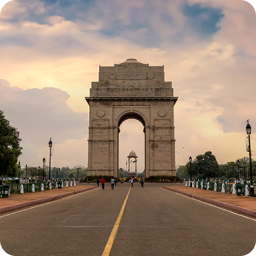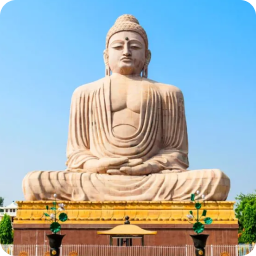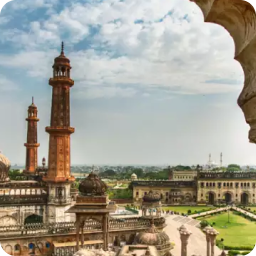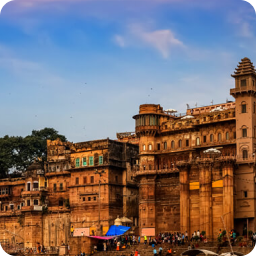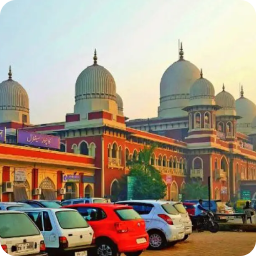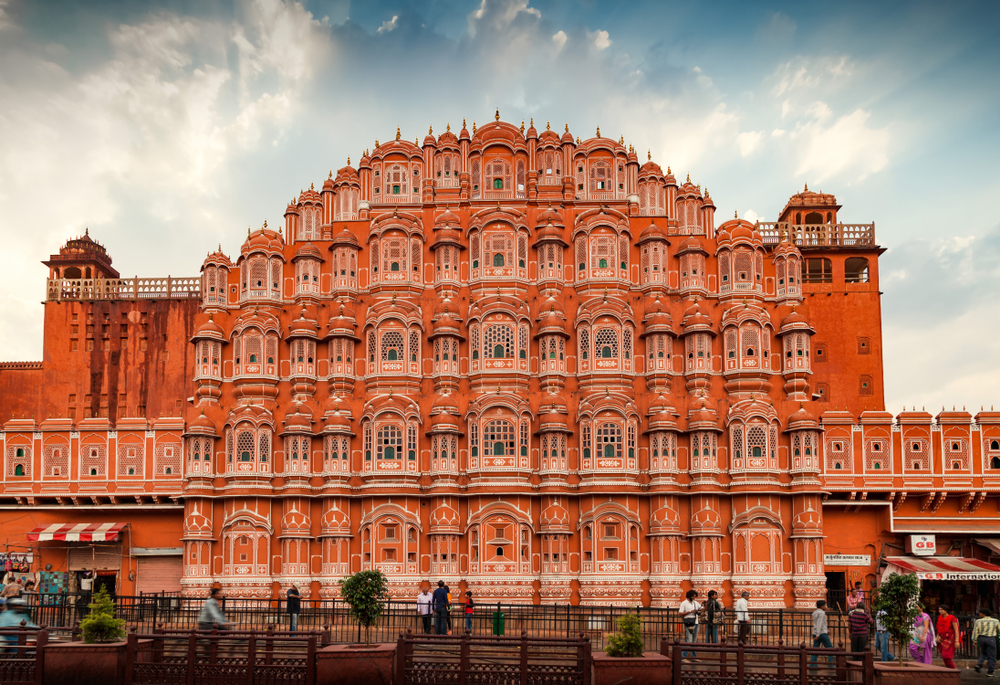Supreme Court: Constitutional Provisions, Evolution and Powers in Indian Polity |
Powers and Significance of the Supreme Court in Indian Polity
To prepare for INDIAN POLITY for any competitive exam, aspirants have to know about the Supreme Court. It gives an idea of all the important topics for the IAS Exam and the polity syllabus (GS-II.). This is an essential portion of the polity. As IAS aspirants, you should be thorough with the Supreme Court. In this article, you can read all about the Supreme Court for the Polity and Governance segments of the UPSC syllabus.
“The Supreme Court of India has more powers than any other Supreme Court in any part of the world.” – Alladi Krishnaswamy Ayyar
India is a federal State with a single and unified judicial system with three-tier structure- Supreme Court (at top), HIGH COURT (at state/s level) and SUBORDINATE COURTS (at district level).
Evolution of India’s Supreme Court: A Historical Journey from 1773 to 1950
- Regulating Act of 1773: Est. the Supreme Court of Judicature at Calcutta as a Court of Record, with full power & authority.
- GoI Act 1935: Federal Court of India with jurisdiction to solve disputes between provinces and federal states and hear appeals against Judgements from HCs.
- Integrated judicial system adopted from the GoI Act of 1935.
- Establishement: SC of India- came into existence on 26 January 1950 (First sitting was held on 28 January 1950)
- Replacement of British Privy Council: As the highest court of appeal by SC leads to the greater jurisdiction of the SC than that of its predecessor,.
Constitutional Framework: The Supreme Court of India – From Part V to Article 147
- Part V (The Union) and Chapter 6 (The Union Judiciary)
- Part V spanning from 124 to Art.147
- Article 124 (1): There shall be a SC of India constituting of a CJI and, until PARLIAMENT by law prescribes a larger number, of not more than seven other Judges. (1+7)
- SC (Number of Judges) Bill of 2019 has added four judges to increase the judicial strength from 31 to 34 including the CJI.
- SC is guarantor of the FR of the citizens and guardian of the Constitution.
- Authority of Parliament: It is authorised to regulate organisation, independence, jurisdiction, powers, procedures of SC.
Supreme Court’s Constitutional Position and Powers
- Federal and highest constitutional court of India with the power of judicial review.
- Highest court of appeal
- Final interpreter of constitution
- Protector and defender of FR
- Court of record (Art.129)
Seat and Authority of the Supreme Court
- Article130: Constitution declares Delhi as seat of SC
- The Constitution also authorises the CJI to determine other places or places as seats of the SC with the approval of the President.
- Provision is only optional and not compulsory – No court can give any direction either to the President or to the CJI to appoint any other place as the seat of the SC.
Procedures and Protocols of the Supreme Court
- With the approval of the President, SC can make rules for regulating generally the practice and procedure of the court.
- Article 143: Constitutional cases or references made by the President are decided by a Bench consisting of at least five judges.
- Other Cases: All other cases are usually decided by a bench consisting of not less than three judges.
- The judgements are delivered by the open court. All judgements are by majority.
PROVISIONS W.R.T JUDGES OF SUPREME COURT AND THEIR POWERS
Judicial Appointments in the Supreme Court: Evolution and Controversies
- Chief Justice of India: Appointed by the PRESIDENT OF INDIA after consultation with such judges of the Supreme Court and high courts as he deems necessary
- Other Judges: The other judges are appointed by the President after consultation with the CJI and such other judges of the SC and the HC as he deems necessary.
- The consultation with the chief justice is obligatory in the case of appointment of a judge other than the Chief justice.
- Convention of Appointing Senior-Most Judge as Chief Justice:
- The convention of appointing the senior most judge of the SC as CJI was violated in 1973 when was appointed as the CJI by superseding three senior judges.
- Again in 1977, M.U Beg was appointed as the CJI by superseding the then senior-most judge.
- Second Judges Case (1993): SC curtailed discretion of the government. SC ruled that the senior most judge of the SC should alone be appointed to the office of the CJI.
Supreme Court: Collegium System for Judicial Appointments
- The SC Collegium: is headed by the CJI and comprises four other senior most judges of the court. (1+5).
- The Collegium system was born through the “three judges case” and it has been in practice since 1998.
- It is used for appointments and transfers of judges in HC and SC.
- No mention of the Collegium either in the original Constitution of India or in successive amendments.
Evolution of the Collegium System and the NJAC Controversy in the Supreme Court
- The SC has given different interpretations of the word ‘consultation’ in the above mentioned provisions.
- First Judges case (1982): SC opined that “consultation” does not mean “concurrence” and it only implies exchange of views.
- Second Judges Case (1993): SC reversed its earlier ruling and changed the interpretation of the word “consultation to concurrence”.
- Third Judges Case (1998): SC opined that the consultation process to be adopted by the CJI requires “consultation of plurality judges” (Not CJI alone).
- The sole opinion of the CJI does not constitute the consultation process. He should consult a collegium of four senior most judges of the SC and even if two judges give an adverse opinion, he should not send the recommendation to the government.
- 99th CAA, 2014 (NJAC): Established to replace the collegium system for the appointment of judges.
- However, the SC upheld the collegium system and struck down the NJAC, stating that the involvement of the political executive in the appointment procedure was against the “Principles of Basic Structure,” specifically the “Independence of the Judiciary.”
- Appointment Procedure of Judges: After receipt of the final recommendation of the CJI, the Minister of Law and Justice will put up the recommendation to the PM who will advise the President in the matter of appointment.
Criteria and Qualifications for Judges in the Supreme Court
- He should be a citizen of India.
- He should have been a judge of a HC for five years; or
- He should have been an advocate of a HC for ten years; or
- He should be a “distinguished jurist” in the opinion of the president (No such provision for judge of HC)
- The Constitution has not prescribed a minimum age for appointment as a judge of the Supreme Court.
Oath and Affirmation of Supreme Court Judges in India
- A person appointed as a judge of the SC, before entering his office, has to make and subscribe to an oath or affirmation before the President, or some other person appointed by him for this purpose.
Tenure of Supreme Court Judges in India
- The Constitution has not fixed the tenure of a judge of the SC.
- He holds office until he attains the age of 65 years.
- Any question regarding his age is to be determined by such authority and in such a manner as provided by Parliament.
- Resignation– By writing to the President.
Mechanisms for Removal of Supreme Court Judges in India
- A judge of the SC can be removed from his office by an order of the President (on the recommendation of the Parliament).
- The address must be supported by a special majority of each House of Parliament (Majority of the total membership of that House and a majority of not less than two-thirds of the members of that House present and voting).
- Grounds for removal – Proved misbehaviour or incapacity.
- Judges Enquiry Act (1968): Regulates the procedure relating to the removal of a judge of the SC by the process of impeachment.
- No judge of the Supreme Court has been impeached so far. Impeachment motions of Justice V Ramaswami (1991–1993) and Justice Dipak Misra (2017-18) were defeated in the Parliament.
- NOTE– Impeachment motion for removal of judge does not lapse on the dissolution of Lok Sabha.
Salaries and Allowances of Supreme Court Judges in India
- Determined from time to time by the Parliament.
- They cannot be varied to their disadvantage after their appointment except during a financial emergency.
Acting Chief Justice (Art. 126): Role and Appointment Process in the Supreme Court of India
- President can appoint a judge of the SC as an Acting CJI when:
- The office of CJI is vacant; or
- The CJI is temporarily absent; or
- The CJI is unable to perform the duties of his office.
Ad Hoc Judges (Art.127) in the Supreme Court of India: Navigating Temporary Appointments for Judicial Quorum
- Chief Justice of India can appoint a judge of a HC as an ad hoc judge of the SC in case of lack of quorum of the permanent judges for a temporary period.
- Only after previous consent of the president and consultation with the Chief Justice of the HC concerned.
- Ad hoc judge so appointed should be qualified for appointment as a judge of the SC.
- While attending, he enjoys all the jurisdiction, powers and privileges of a judge of the SC.
Role of Retired Judges (Art.128) in the Supreme Court of India on Temporary Assignments
- The CJI can request a retired judge of the SC or a retired judge of a HC (qualified for appointment as a judge of the SC) to act as a judge of the SC for a temporary period.
- Only after the previous consent of the President and also of the person to be appointed.
- Such a judge is entitled to such allowances as the president may determine.
Advocates in the Supreme Court of India
- Three categories of Advocates are entitled to practice law before the Supreme Court
1. Senior Advocates
-
- Advocates who are designated as Senior Advocates by the SC of India or by any High Court.
- Court can designate any Advocate, with his consent, as Senior Advocate.
- A Senior Advocate is not entitled to appear without an Advocate-on-Record in the SC or without a junior in any other court or tribunal in India.
2. Advocates-on-Record
- Only these advocates are entitled to file any matter or document before the SC.
- They can also file an appearance or act for a party in the Supreme Court.
3. Other Advocates
- Advocates whose names are entered on the roll of any State Bar Council.
- They can appear and argue any matter on behalf of a party in the SC.
- They are not entitled to file any document or matter before the Court.
Constitutional Safeguards: Ensuring Independence of the Supreme Court of India
- The Constitution has made the following provisions to safeguard and ensure the independent and impartial functioning of the Supreme Court-
| Provisions |
|
|
|
|
|
|
|
|
|
|
JURISDICTION OF SUPREME COURT
Original Jurisdiction of the Supreme Court: Adjudicating Federal Disputes in the Indian Federation
- As a Federal court, the SC decides disputes between different units of the Indian Federation on-
- Any dispute between the Centre and one or more states; or
- Centre and any state or states on one side and one or more states on the other; or
- Between two or more states.
- In the above federal disputes, the Supreme Court has exclusive (Only SC can adjudicate, not any other court) and original (power to hear in first instance, not by the way of appeal)
- Original jurisdiction of the SC does not extend to–
- Dispute arising out of any pre-constitution treaty, agreement, covenant, engagement, sanad or other similar instrument.
- A dispute arising out of any treaty, agreement which specifically provides that the said jurisdiction does not extent to such a dispute-
- Inter-state water disputes.
- Matters referred to the Finance Commission.
- Adjustment of certain expenses and pensions between the Centre and the states.
- Ordinary dispute of Commercial nature between the Centre and the states.
- Recovery of damages by a state against the Centre.
Writ Jurisdiction of the Supreme Court: Safeguarding Fundamental Rights in India
- SC is empowered to issue writs- habeas corpus, mandamus, prohibition, quo-warran to and certiorari for the enforcement of the FR of an aggrieved citizen.
- SC has original and concurrent jurisdiction in this regard.
NOTE –
- Not exclusive because HC are also empowered to issue writs for the enforcement of the FR under Article 226.
- SC can issue writs only for the enforcement of the FR and not for other purposes.
- HC can issue writs for the enforcement of the FR and for other purposes.
- This makes the writ jurisdiction of the HC is wider than that of the SC.
Appellate Jurisdiction of the Supreme Court: Appeals in Constitutional, Civil and Criminal Matters
- The SC is a court of appeal and hears appeals against the judgements of the lower courts.
- Appeals in Constitutional Matters: If the HC certifies that the case involves a substantial question of law that requires the interpretation of the Constitution.
- Appeals in Civil Matters: Case involves a substantial question of law or needs to be decided by the SC.
- Appeals in criminal Matters: If HC has- on appeal reversed an order of acquittal of an accused person and sentenced him to death or has taken before itself any case from any subordinate court and convicted the accused person and sentenced him to death or certifies that the case is a fit one for appeal to the SC.
- Appeals by Special Leave (Art.136): Discretionary power of SC and authorised to grant special leave appeal from any judgment in any matter passed by any court or tribunal in the country (except military tribunal and court martial). This provision contains-
- Discretionary power, cannot be claimed as a matter of right.
- Granted in any judgment whether final or interlocutory.
- It may be related to any matter – constitutional, civil, criminal, income-tax, labor, revenue, advocates, etc.
- It can be granted against any court or tribunal (except a military court).
Advisory Role of the Supreme Court: Constitutional Insights and Pre-constitution Dispute Resolution
- Article 143: Constitution authorises the President to seek the opinion of the SC (through Attorney general of India) in the two categories-
- On any question of law or fact of public importance which has arisen or which is likely to arise – Optional (SC may tender or refuge to tender opinion)
- On any dispute arising out of any pre-constitution treaty, agreement, covenant, engagement, sanad or similar instruments – Mandatory on SC to tender opinion.
- Opinion expressed by the SC in both cases is only advisory and not a judicial pronouncement.
The Supreme Court of India as a Court of Record (Art.129): Perpetuating Judgements, Precedents and Legal Testimony
- The judgements, proceedings and acts of the SC are recorded for perpetual memory and testimony.
- These records are admitted to be of evidentiary value and cannot be questioned when produced before any court.
- These records recognised as legal precedents and legal references.
The Supreme Court of India: Safeguarding Constitutional Validity and Ensuring Judicial Review
- Power of the SC to examine the constitutionality of legislative enactments and executive orders of both the Central and state governments.
- If they are found to be violative of the Constitution (ultra-vires),they can be declared as illegal, unconstitutional and invalid (null and void) by the SC.
- Constitutional provisions– Art.13, 32, 131-136, 143, 226, 246, 256 etc.
- Importance of Judicial Review –
- To uphold the principle of supremacy of the constitution.
- To maintain federal equilibrium between centre and state.
- To protect the fundamental rights of citizens.
- Constitutional validity of legislative or executive enactments can be challenged
- If it infringes the FR (Part III)
- If it is outside the competence of framing authority
- If it is in contravention to constitutional provisions.
- Phrase “judicial review” has nowhere been used in the constitution.
- India – Scope of JR is narrower than USA due to ”procedure established by law“ in India.
- USA – Scope of JR is broader than India due to ”due process of law“ in India.
- Procedure Established by Law: Only substantive grounds examined i.e whether the law is within the power of the authority concerned or not. India adopted from Japan.
- Due Process of Law: Examined on both substantive grounds (lawful/unlawful) and Procedural grounds (Reasonable/unreasonable).
Supreme Court of India: Guardian of Justice and Constitutional Interpretation (ART.147)
- SC is the final interpreter of the Constitution.
- Give the final version to the spirit and content of the provisions of the constitution and the verbiage used in the constitution.
OTHER POWERS OF SUPREME COURT
- Adjudicate on disputes regarding the election of the president and the vice–president. SC has the original, exclusive and final authority in this respect.
- Binding Advice to the President: On a reference made by the president, it enquires into the conduct and behaviour of the chairman and members of UPSC.
- The It can recommend to the president for their removal if it finds them guilty of misbehaviour.
- The advice tendered by the SC in this regard is binding on the President.
- Self-correcting Agency: Power to review its own judgement or order. Thus, it is not bound by its previous rulings and can depart from it in the interest of justice or community welfare.
- Authority to Transfer and Dispose Cases from High Courts: It is authorised to withdraw the cases pending before the high courts and dispose of them by itself or can also transfer a case or appeal pending before one high court to another high court.
- Binding Nature and Enforcement of Supreme Court Laws: Laws of SC are binding on all courts in India. Its decree or order is enforceable throughout the territory of India.
- All authorities (civil and judicial) in the country should act in aid of the Supreme Court (Art.144)
- Power of Judicial Superintendence and Control: Over all the courts and tribunals functioning in the entire territory of the country.
- Expansion of Supreme Court’s Jurisdiction: The SC’s jurisdiction and powers with respect to matters in the Union list can be enlarged by the Parliament.
- SC’s jurisdiction and powers with respect to other matters can be enlarged by a special agreement of the Centre and the states.
INDIAN SUPREME COURT VIZ-A-VIZ AMERICAN SUPREME COURT
| Indian Supreme Court | American Supreme Court |
|
|
|
|
|
|
|
|
|
|
|
|
|
|
Curative Petitions: Safeguarding Justice and Preventing Abuse of Process in Legal Proceedings
Context – Recently, Curative petitions were filed in the Nirbhaya case.
Objectives – Avoid miscarriage of justice and to prevent abuse of process.
- Concept first evolved by the SC in Rupa Ashok Hurra vs. Ashok Hurra & another case (2002) on the question whether an aggrieved person is entitled to any relief against the final judgment/order of the SC, even after the dismissal of a review petition.
- It is based on interpretation of Art. 137, which provides that in the matter of laws and rules made under Art.145, SC has the power to review any judgment pronounced (or order made) by it.
- Petition can be entertained if the petitioner establishes that there was a violation of the principles of natural justice, and that he was not heard by the court before passing an order.
- Petition is usually decided by judges in the chamber unless a specific request for an open-court hearing is allowed.
- In the event of the Bench holding at any stage that the petition is without any merit, it may impose a penalty on the petitioner.
Capital Punishment: A Controversial Debate and the Case for Abolition
Context – Recently, convicts in the Nirbhaya case were executed.
- “Rarest of rare” criteria is subjective in nature (Bacchan Singh case)
- Irreversible nature of punishment.
- Deterrence depends upon conviction rate not on penalty.
- Values of society change according to times. E.g Homosexuality (Art.377 of IPC)
- International examples such as Canada, Australia.
- Criteria for admission in EU (all members have abolished capital punishment)
- Ethically non-justiciable – Buddhism and Jainism
Evolution and Impact of Judicial Activism, with a Focus on Public Interest Litigation (PIL) and the Role of the Supreme Court
- Judicial activism envisages the proactive role played by the judiciary in the protection of the rights of citizens and in the promotion of justice in the society.
- Philosophy implies the assertive role played by the judiciary to force the other two organs of the government (i.e legislature and executive) to discharge their constitutional duties.
- Judicial activism is also known as “judicial dynamism”. It is the antithesis of “judicial restraint”, which means the self-control exercised by the judiciary.
Background
- Judicial activism originated and developed in the USA in the 1960s
- It was introduced in the early 1980s – Justice R. Krishna Iyer and Justice P.N. Bhagwati were the pioneers of the concept of Judicial activism in India.
- Innovative judicial procedure for enhancing social and economic rights of disadvantaged and marginalised groups.
- Facilitated by the relaxation of the traditional rule of “locus standi”.
- Any public-spirited citizen or a social organisation can move the court for the enforcement of the rights of any person or group.
- In India, the PIL is a product of the judicial activism role of the Supreme Court.
- PIL is also known variously as Social Action Litigation (SAL), Social Interest Litigation (SIL) and Class Action Litigation (CAL).
- Constitutional Basis – Art.13, 14, 21, 32, 226 etc.
Importance of judicial activism
- Necessary for maintaining the rule of law.
- Furthering the use of justice.
- Social justice as enshrined in preamble.
- Accelerating the pace of realisation of the constitutional objectives.
- Facilitating effective access to justice to the socially and EWS of the society.
- Meaningful realisation of the fundamental rights.
Reason for evolution of judicial activism in India
- For filling the legal vacuum– E.g Vishakha guidelines
- For checks and balances
- For timely and complete justice
- Rising demands for securing human rights.
- Failure of legislations -E.g former Triple talaq law
Examples of Judicial Activism
- Ganga Action Plan→ National Mission on Ganga Cleaning.
- Medical aid to every injured person(Good Samaritan law)
- Vishakha vs state of Rajasthan guideline on prohibition of harassment of women at workplace.
- Environmental Pollution Control Authority– to curb air pollution in NCR.
- Striking down sec. 66A of IT act 2000.
- Maneka Gandhi Case: Broader interpretation of Art 21 (“Due process of law”)
- Prakash Singh Badal Case 2006: Police reform guidelines.
Criticism of judicial activism
- Violation of separation of power doctrine and affects checks and balance
- PIL is likely to lead to conflicts between the three organs of government on account of the right of courts to interfere in the working of other two organs.
- It has been alleged that the decisions of the courts in PIL cases are not likely to be enforced.
- Judicial activism through PIL could lead to judicial overreach or adventurism.
- Entertaining cases of violation of FR through letters, the court will be flooded with litigation, resulting in the delay in the disposal of several other important cases.
Judicial Restraint: Striking the Right Balance in the Supreme Court’s Role
- Judicial Restraint is self-control exercised by the judiciary. It is the antithesis of “judicial activism”. However, both judicial philosophies originated, to some extent, in the USA.
- Judicial restraint philosophy connotes that the role of judges should be limited merely to say what the law is, leaving the business of law making where it belongs with the legislators and the executives.
- This view holds that the ‘original intent’ of the constitution makers and its amendments must guide the courts.
- There is a very fine and blur line between judicial activism and judicial overreach. Judicial activism must not become judicial adventurism.
- Supreme Court of India in 2007, called for judicial restraint and asked courts not to encroach the functions of the legislature or the executive, asserting there is a broad separation of powers under the Constitution and each organ of the state must respect the sovereignty of other organs.
DIFFERENCES BETWEEN JUDICIAL REVIEW, JUDICIAL ACTIVISM, JUDICIAL RESTRAINT, JUDICIAL OVERREACH IN THE SUPREME COURT OF INDIA
| Judicial Review | Judicial Activism | Judicial Restraint | Judicial Overreach |
| Judiciary examines the constitutionality of legislative enactments and executive orders of both the Central and state governments. | Proactive role played by the judiciary in the protection of the rights of citizens and in the promotion of justice in the society. | Self-control exercised by the judiciary and limiting itself only to interpretation of original intent of constitution makers. | When the judiciary oversteps the powers given to it, it may interfere with the proper functioning of the legislative or executive organs of government. |
| Enabling in nature | Enabling in nature | Restrictive, limiting nature. | Encroaching and predatory in nature. |
| Not mentioned in constitution | Not mentioned in constitution | Not mentioned in constitution | Not mentioned in constitution |
| Origin- Art.13, 32, 226 etc. | Origin- Judicially innovated | Origin- Judicially innovated | Origin- Judicially innovated |
| Desirable in any democracy to protect rights of citizens. | Desirable in any democracy to protect rights of citizens and provide justice to people. | Desirable in any democracy to protect and respect separation of power and independence of other organs. | Undesirable in any democracy. It destroys the spirit of separation of powers |
| E.g.- Striking down of the Section 66A of the IT Act as it was against the Fundamental Rights guaranteed by the constitution.
|
E.g– National Green Tribunal (NGT) banning diesel trucks older than 10 years in Delhi etc. | E.g– In S.R Bommai case the judges said that there are certain situations where the political element dominates and no judicial review is possible. | E.g Misuse the power to punish for contempt of court. |
Contempt of Courts Act, 1971: A Critical Assessment and the Supreme Court’s Role
- Expression “contempt of court” has not been defined by the Constitution.
- The expression has been defined by the Contempt of Court Act of 1971.
- Civil Contempt: Wilful disobedience to any judgement, order, writ or other process of a court or wilful breach of an undertaking given to a court.
- Criminal Contempt: Publication of any matter or doing an act which-
- Scandalises or lowers the authority of a court or
- Prejudices or interferes with the due course of a judicial proceeding or
- Interferes or obstructs the administration of justice in any other manner.
- Exception: Innocent publication and distribution of some matter, fair and accurate report of judicial proceedings, fair and reasonable criticism of judicial acts and comment on the administrative side of the judiciary do not amount to contempt of court.
Contours of Indian Judiciary: Challenges and the Supreme Court Spectrum
- Judicial Accountability: Allegation of sexual harassment against the CJI
- Debate between judicial independence and judicial accountability.
- The Indian justice system is retributive instead of rehabilitative.
- Information asymmetry with Judiciary– Out of ambit of RTI
- Opacity in the operations of Judiciary– press conference of 4 judges in 2019
- Judicial Overreach: Encroaching domain of executive in giving directions.
- Excessive use of Contempt of Court power– Silencing dissent voice.
- Credibility Crisis: Appointment of Ex. CJI Ranjan Gogoi on RS in 2020.
- Large Vacancies: Judge: population ratio – 20 per million.
- Poor Case Clearance Rate(~88%): leads to pendency of the cases (5 cr pending cases) -Economic survey 2018.
Is Supreme Court-Led Judicial Reform the Answer to Strengthening the Indian Judiciary?
- Bringing a new Judicial standards and accountability bill to enforce standards.
- Comprehensive Code of Conduct for Judges which is enforceable by law.
- Amendment to Contempt of Court Act 1971 as recommended by Law comm.
- Independent Lokpal for judiciary
- Addressing the Issue of Vacancies: Filling vacancies would reduce pendency of cases – Enhancing CCR. Law commission recommended the judge strength fixation formula.
- All India Judicial Service would increase increasing quality of judges
- Use of Information technology (ICT) solutions – LIMBS system
- Exploring Alternate dispute resolution (ADR)– Lok Adalat, Gram Nyayalayas, Village Legal Care & Support Centre for pre-litigation settlement.
Conclusion
Accessibility, affordability and speedy justice are fundamental pillars of a good and efficient, effective judicial administration. Continuous assessment and improvement is the key to strengthen and reinforce the justice delivery system in India.
Debate on Judicial Administration in the Supreme Court
- Master of Roster Case: It refers to the privilege of the CJI to constitute Benches to hear cases.
- The controversy has emerged in the SC over absolute power of Chief Justice on the judicial administration.
- SC has upheld a number of times that “the Chief Justice is the master of the roster and he alone has the prerogative to constitute the Benches of the Court and allocate cases to the Benches so constituted.”
- No Judge can take up the matter on his own, unless allocated by the Chief Justice of India.
Supreme Court Dilemma: Regional Benches or a National Court of Appeal?
- Recently, the Vice-President in his speech has suggested that the SC institute four regional Benches to tackle the enormous backlog of cases, and to ensure their speedy disposal.
- Article 130 states that the SC may sit at place(s) other than Delhi on the order of the CJI with the prior approval of the President of India.
- No constitutional amendment would be required in order to set up such benches.
- Law commission had recommended the division of the SC into –
- Constitutional court
- National court of appeal.
- More than 65,000 cases are pending in the SC, and disposal of appeals takes many years.
- 10thLaw Commission of India (95th Report) recommended that “the SC should consist of two Divisions, namely- (a) Constitutional Division and (b) Legal Division”.
- Vasantha Kumar Case, 2016: SC referred the matter to a Constitutional Bench for decision on the National Court of Appeal.
| Arguments for | Arguments against |
|
|
|
|
|
|
Context –
Recently (2019) SC asked the states to adopt the Witness Protection Scheme.
- In Zahira sheikh vs. State of Gujarat, SC observed that witness protection is necessary for free and fair trial.
- SC under Article 141/142 of the Constitution of India has provided legal sanctity to the scheme.
Constitutional Provisions
- Article 141: Law declared by the SC shall be binding on all courts within the territory of India.
- Article 142: SC can grant appropriate relief for doing complete justice.
Provisions
- Secretary, District Legal Services Authority (DLSA) can pass witness protection orders for the witness protection under this Scheme for protection of identity/change of identity/relocation of a witness, categorization of threat etc.
- Standard Procedure to be followed for witness protection.
- Use of technology like in-camera trials.
- Constitution of Witness Protection Fund etc
CJI’s Recent Pronouncement on the Applicability of RTI to the Supreme Court
- The SC has ruled that the office of the CJI is a public authority under the RTI act 2005.
- A five-judge Constitution Bench headed by Chief Justice Ranjan Gogoi gave the ruling.
- The SC is a “public authority” and the office of the CJI is part and parcel of the institution. Hence, if the SC is a public authority, so is the office of the CJI.
- The judiciary cannot function in blanket insulation as judges enjoy a constitutional post and discharge public duty.
- However, Right to Privacy is an important aspect and has to be balanced with transparency while deciding to give out information from the office of the CJI.
- RTI cannot be used as a tool of surveillance and that judicial independence has to be kept in mind while dealing with transparency.
- NOTE – On the issue related to the appointment of judges, the Supreme Court held that only the names of the judges recommended by the Collegium for appointment can be disclosed, not the reasons.
- NOTE– The CBI is out of the purview of the RTI Act. It was granted exemption in 2011.
Way forward
The judgment of SC is an example for other bodies such as political parties, number of schools, trusts and public-private partnerships who resist categorisation as public authorities under the Act.






